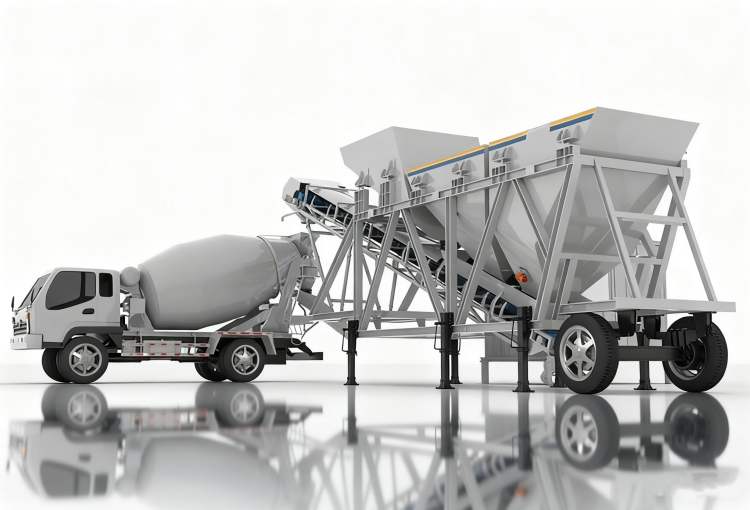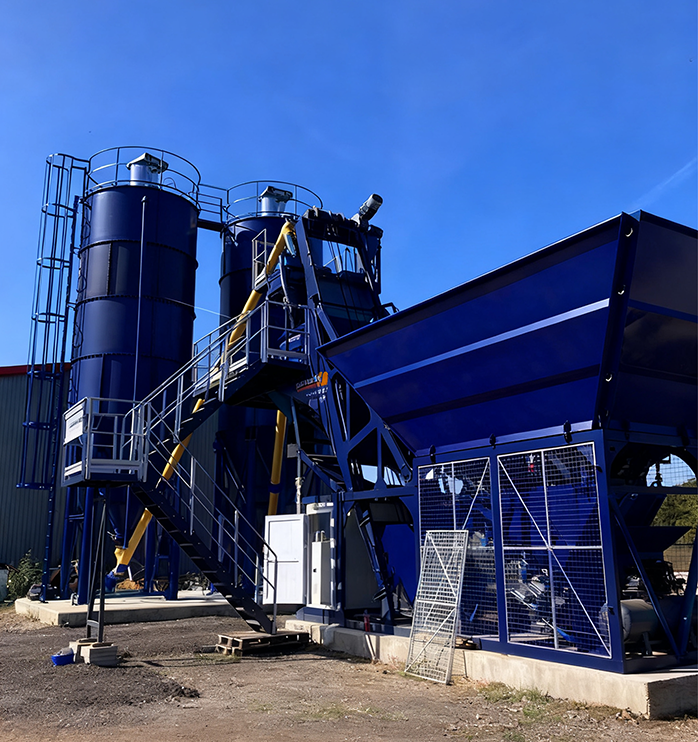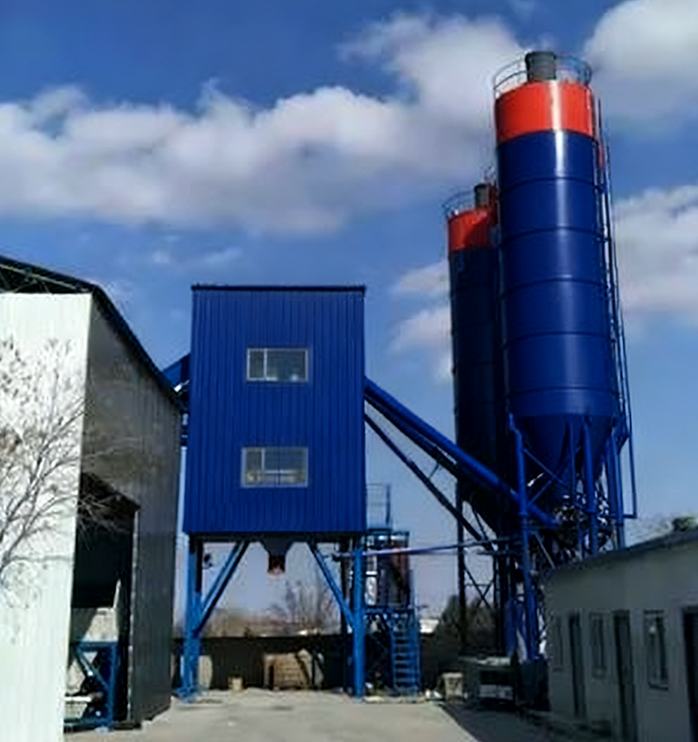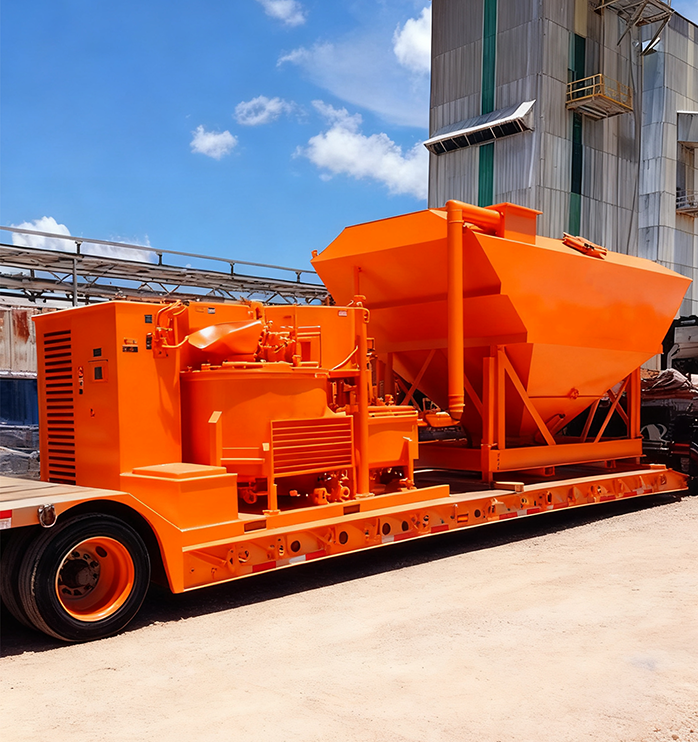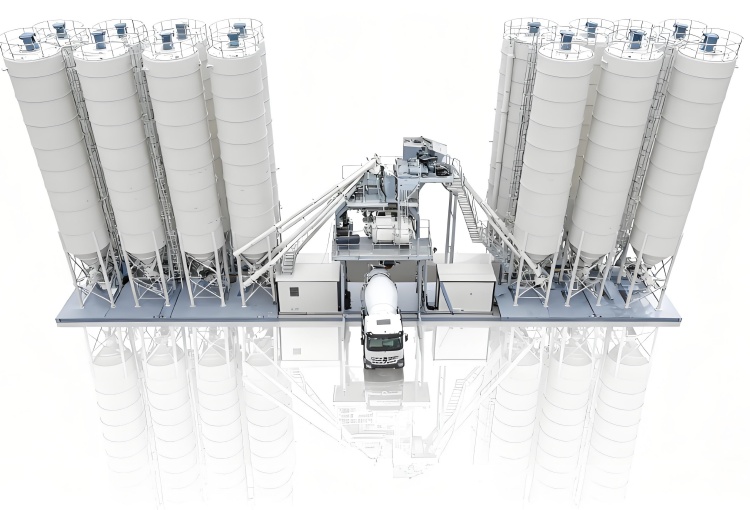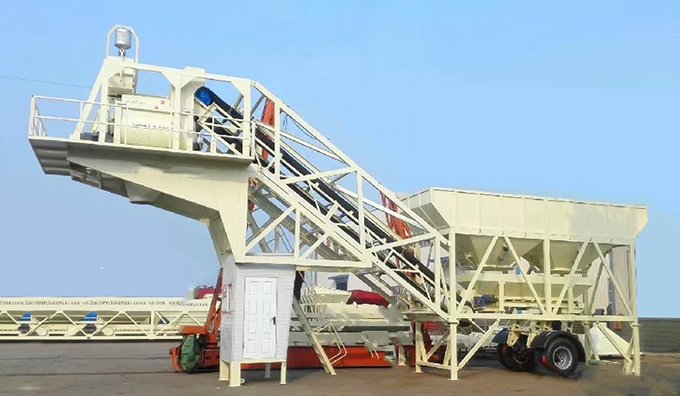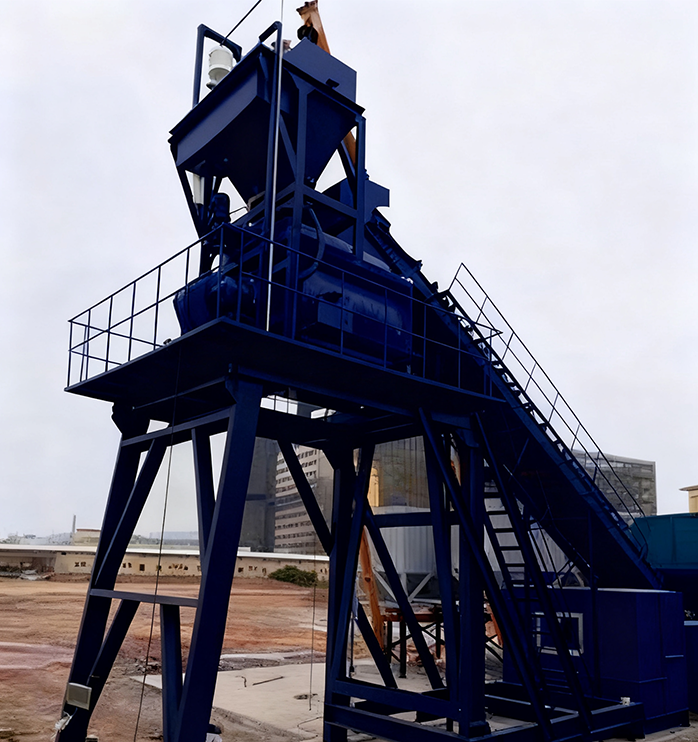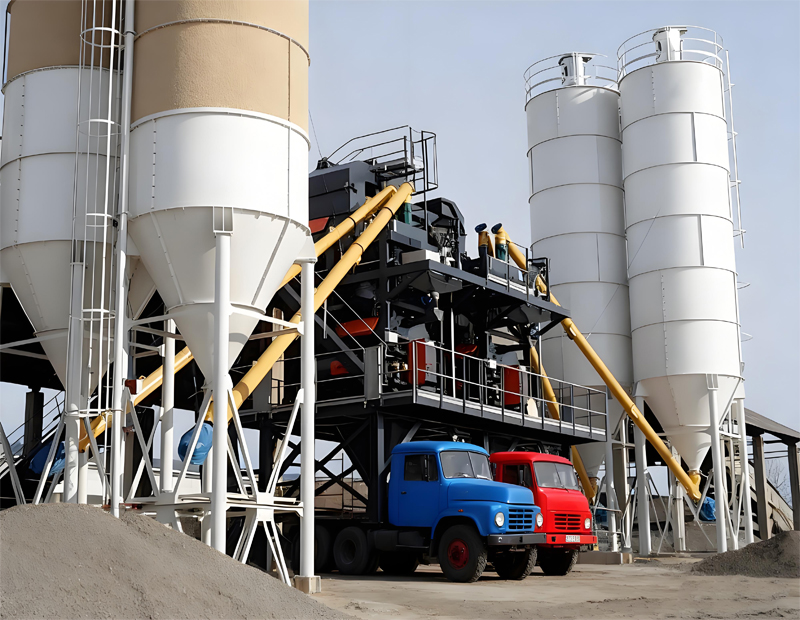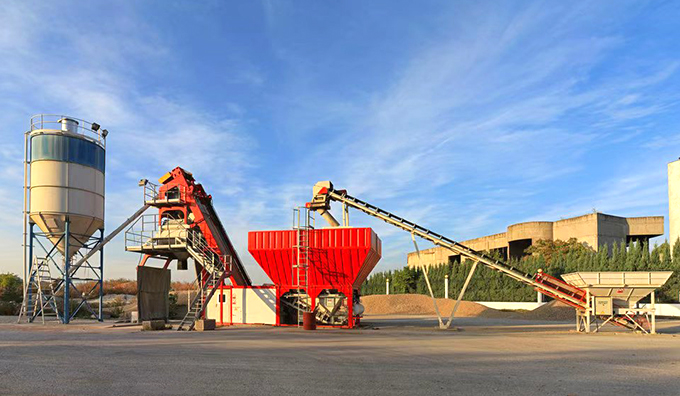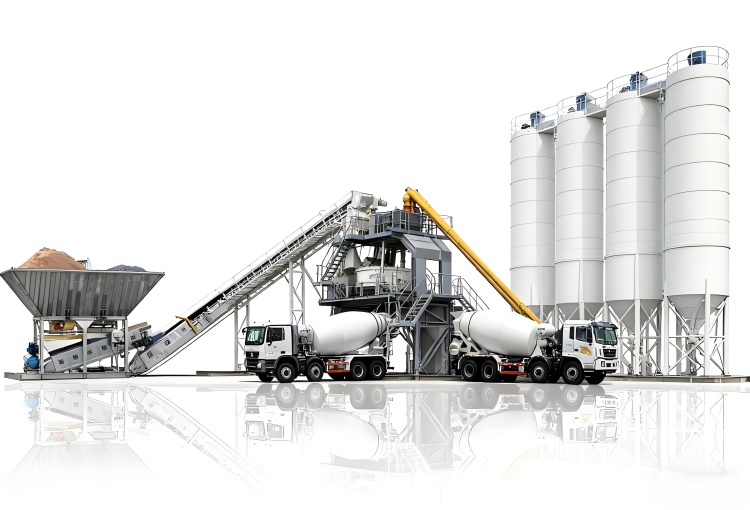In the past decade, the concrete industry has undergone a major transformation. Rapid urbanization, infrastructure megaprojects, and stricter environmental policies have driven the evolution of concrete batching plants from mechanical production units into intelligent, sustainable, and fully automated systems. The new global standards—covering technology, efficiency, quality control, and environmental protection—are reshaping how concrete is produced, managed, and delivered.
This article explores the technical foundation, operational standards, and strategic optimization of modern concrete production. It also offers actionable frameworks for plant operators and decision-makers to align their systems with the latest performance benchmarks.
1. The Global Shift in Concrete Production Standards
1.1 From Manual to Intelligent Control
Older stationary concrete batching plants relied heavily on manual processes, with operators adjusting material ratios and mixer times by experience. This often caused inconsistencies in concrete quality. Modern plants now integrate automated dosing, moisture sensors, and AI-based quality monitoring.
In fact, automation has improved batching accuracy by up to 98%, while reducing cement waste by 5–10%.
Key upgrades include:
1.2 Sustainability and Carbon Efficiency
Environmental standards worldwide, such as the EU’s “Fit for 55” initiative and the U.S. EPA emission guidelines, now require batching plants to control dust, noise, and wastewater.
New-generation mobile concrete batching plants and precast concrete batching plants adopt:
-
Enclosed aggregate conveyors and filters
-
Recycled wash-water recovery systems
-
Energy-optimized concrete mixing plants with low-carbon motors
Interestingly, compliance with environmental regulations not only enhances brand reputation but also improves ROI through energy and material savings.
2. Understanding the Technical Core of Modern Concrete Plants
2.1 Integrated Systems Architecture
A modern concrete batching plant is no longer a set of mechanical devices; it’s an interconnected system combining:
-
Mixing efficiency (through high-torque mixers and optimized blades)
-
Dosing precision (with automated scales and real-time correction algorithms)
-
Material flow control (for cement, water, and aggregates)
-
Digital tracking (through sensors and PLC logic systems)
For dry concrete batching plants and dry mix mortar plants, the emphasis is on material separation, ensuring zero contamination during transfer.
2.2 Modular and Scalable Design
Manufacturers now design volumetric concrete batching plants and grout batching plants with modular structures that allow rapid expansion or relocation.
This is especially critical for project-based contractors who need portability without compromising on capacity or output consistency.
3. Cost and Performance Optimization
3.1 Cost Transparency and Life-Cycle ROI
When evaluating a concrete batching plant price, decision-makers must analyze not just the purchase cost but the total life-cycle value:
| Component |
Average Cost (USD) |
Expected Service Life |
| Mixer System |
25,000–60,000 |
10 years |
| Control Panel |
5,000–12,000 |
8 years |
| Aggregate Conveyor |
8,000–15,000 |
7 years |
| Software & Sensors |
10,000–30,000 |
5 years |
A well-designed stationary concrete batching plant with predictive maintenance achieves 20–30% lower operating costs compared to legacy systems.
3.2 Process Efficiency Benchmarking
Global standards now measure:
-
Cycle time: 45–60 seconds per batch
-
Material accuracy: ±1% for aggregates, ±0.5% for water and admixtures
-
Energy efficiency: ≥90% motor performance with smart VFD controls
Notably, concrete batching plant calibration is now standardized in ISO and ASTM documentation, requiring verification every 3–6 months.
4. Automation and Digital Control
4.1 AI-Driven Production Control
AI algorithms within concrete batch plant software analyze moisture levels, temperature, and historical batch data to automatically adjust material dosing.
This ensures every ready mix concrete plant maintains consistent compressive strength without manual recalibration.
Key benefits:
-
Automatic fault detection
-
Batch report generation for compliance
-
Predictive alerts for motor wear or mixer imbalance
4.2 Cloud Connectivity and Remote Operations
Cloud-based systems allow managers to supervise concrete ready mix plants near me across multiple locations in real-time.
These digital twins also integrate with concrete batching plant layout drawing PDFs for virtual inspection and documentation.
5. Safety and Environmental Compliance
5.1 Occupational and Structural Safety
Modern concrete batching plant manufacturers in China are integrating multiple layers of safety protocols:
5.2 Emission and Waste Management
Regulations now demand plants implement:
-
Enclosed dust collection systems (95% filtration rate)
-
Slurry recycling in washout pits
-
Energy recovery via heat-exchanger systems
These measures reduce concrete batching plant cost long-term by minimizing penalties and resource loss.
In fact, eco-optimized concrete mixing plants achieve up to 15% lower CO₂ emissions per cubic meter of concrete produced.
6. Strategic Solutions for Future-Ready Plants
6.1 Predictive Maintenance Framework
To maintain uptime, a clear predictive maintenance strategy is essential:
-
Install IoT sensors on motors, gearboxes, and mixers
-
Connect data streams to concrete batch plant software
-
Analyze trends in vibration, load, and torque
-
Trigger early intervention before breakdown
Quantitatively, this method reduces downtime by 25–40%.
6.2 Process Standardization and Documentation
Plant owners should align production data with:
-
ISO 9001 (Quality Management)
-
ISO 14001 (Environmental Management)
-
CE/ASTM performance compliance
This ensures global export readiness and boosts client confidence.
7. Long-Term Optimization: The Next Five Years
Emerging trends defining the next generation of concrete batching plants include:
-
AI-controlled batching algorithms
-
Automated truck loading and dispatch
-
Digital twin simulation
-
Carbon capture concrete technology
-
Smart grid energy integration
Manufacturers and end-users who adopt these technologies early will secure a competitive edge in cost, quality, and sustainability.
Interestingly, combining automation, predictive analytics, and modular scalability will redefine how concrete batching plant manufacturers compete in the global market.
8. Implementation Roadmap for Plant Upgrades
| Phase |
Duration |
Key Deliverables |
| Stage 1: Audit & Planning |
2–4 weeks |
Evaluate current equipment, define upgrade goals |
| Stage 2: Hardware Integration |
1–3 months |
Sensor installation, PLC upgrades |
| Stage 3: Software Deployment |
1–2 months |
AI software, reporting systems |
| Stage 4: Calibration & Training |
Ongoing |
Staff training, calibration verification |
Concrete batching plant layout and equipment diagrams must be updated to reflect new automation and control layers.
9. Quantifiable Gains from Modernization
After upgrading to global standards:
-
Batch consistency: improved by 12–18%
-
Energy consumption: reduced by 10–20%
-
Cement waste: lowered by 7–10%
-
Operational uptime: increased to 95%+
When combined with digital maintenance tracking and modular design, modernization ensures both short-term returns and long-term sustainability.
10. Conclusion and Call to Action
Modern concrete batching plants represent the intersection of engineering precision, sustainability, and digital intelligence.
Meeting the new standards requires a shift in mindset—from reactive maintenance to predictive control, from isolated production to networked systems.
Companies investing in smart, modular, and energy-efficient plants—whether mobile concrete batching plants, precast concrete batching plants, or dry concrete batching plants—will lead the next wave of global infrastructure development.

